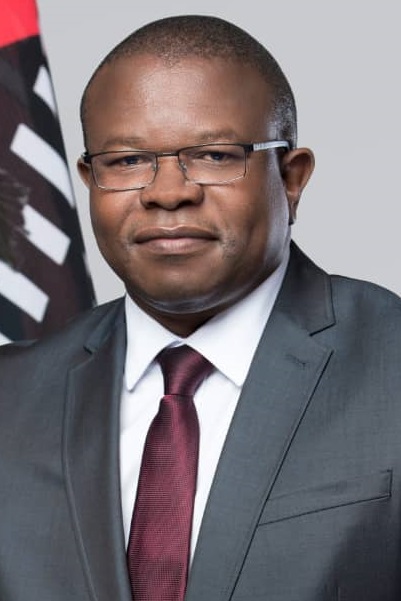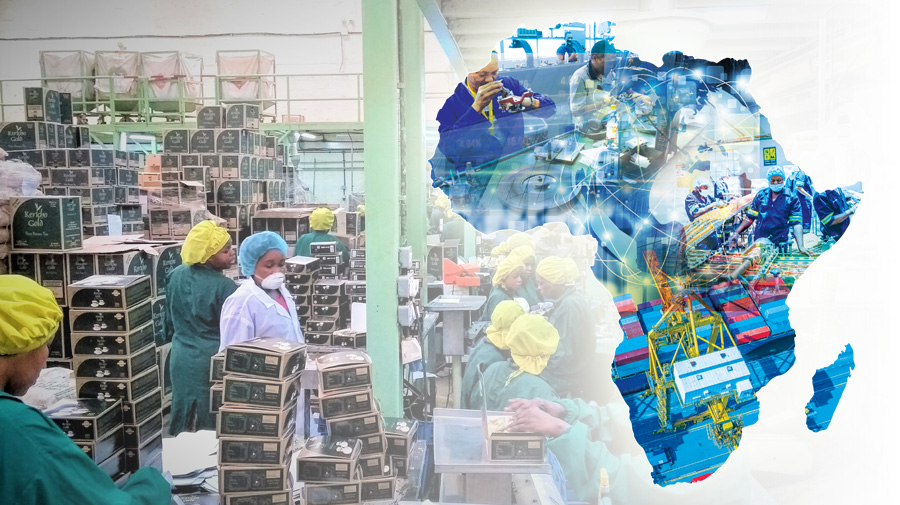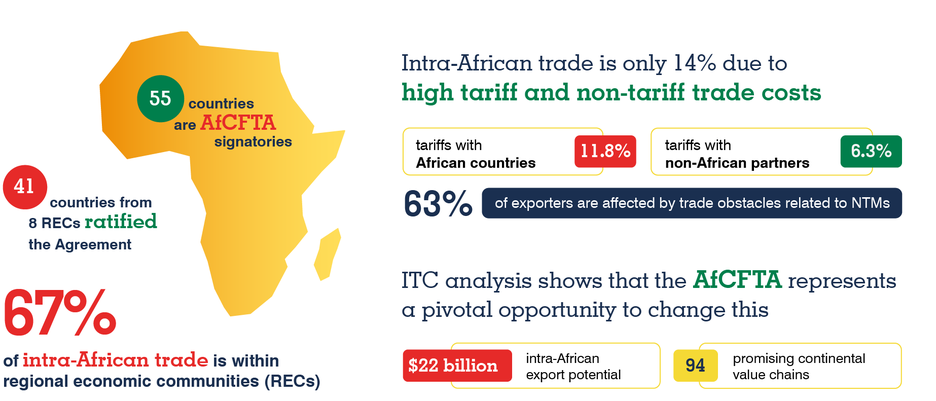
By Delisa Thwala
Intra-African trade fosters regional integration by fostering collaboration among African countries, resulting in the creation of common infrastructure, harmonized rules, and the removal of trade obstacles.
The Kingdom of Eswatini has been listed as number 8 in the top 10 countries that foster and are doing well in intra-African trade.
Business Insider Africa compiled the list based on activities in the economic sector growth.
According to the report the trading between African countries aided the likes of Eswatini in reducing huge import bills and helped to ameliorate the fiscal crisis; supply chain issues as experienced through the Covid-19 pandemic and still course correcting today; and food insecurities heightened by disasters.
The Minister of Commerce, Industry and Trade Manqoba Khumalo has emphasized Eswatini’s need to develop a practical and effective strategy and action plan for the private sector, including MSMEs, to be better positioned to take advantage of the available market access opportunities presented by AfCFTA.
New Markets
The Honourable Minister said: “The AfCFTA Agreement opens new market access opportunities for Eswatini to expand her intra-African trade beyond the traditional markets, such as SACU, SADC, COMESA, and the EU. Accessing the wider African market to export its goods and services on duty-free market access will bring about more revenues for our country’s development.”
He notes that for Eswatini, one of the objectives of the National Strategy is to leverage deeper integration within the framework of the AfCFTA to facilitate an increase in Eswatini’s trade and investment within the African continent.

“It is also to support structural transformation and foster economic growth and sustainable development, as well as create employment opportunities for all emaSwati, particularly women and the youth, including people with disabilities with the ultimate aim of reducing poverty in the country,” he said.
RELATED: Eswatini exporters must embrace E63.7 trillion AfCFTA market
Initiatives like the African Continental Free Trade Area (AfCFTA) are critical in this respect. The AfCFTA intends to create a single market for products and services spanning 54 African countries, making it the world’s biggest free trade area in terms of member countries.
According to African Trade Report 2024; Climate Implications of the AfCFTA Implementation, by Afreximbank, trade within Africa grew to E192.2 billion in 2023, a 3.2% increase from the impressive 10.9% growth in 2022.
Inter-African commerce showed impressive endurance in the face of a slowdown in the global economy and significant obstacles encountered by many countries.
Disparities
Additionally, Africa’s percentage of all intra-continental trade increased to 14.9% from 13.6 in 2022.
This upward pattern is a result of cooperative initiatives taken by countries around the continent, such as the ongoing implementation of the AfCFTA, intending to promote commerce inside Africa.
“However, the aggregate figures mask significant regional disparities. With its remarkable growth rate of 41.1 per cent in its trade with neighbouring countries, Southern Africa reinforced its position as the leading driver of intra-African trade in 2023,” the report reads.

“West Africa also solidified its position as the second-largest intra-African trading subregion, accounting for 25.7 per cent of total intra-African trade. East Africa emerged as the third-largest intra-African trading subregion, contributing 14.1 per cent. North and Central Africa accounted for about 12.4 per cent and 6.6 per cent, respectively, of total intra-African trade,” it adds.
In 2021, Eswatini’s major trading partner countries for exports were South Africa, Kenya, Nigeria, Mozambique, and Zimbabwe and for imports, they were South Africa, China, India, Mozambique, and the United States
Eswatini is a small country (slightly smaller than New Jersey) with a population of 1.2 million. It is bordered by South Africa and Mozambique.
Eswatini has a relatively diverse economy dominated by the agriculture and manufacturing sectors.
Eswatini
Due to its small population, Eswatini has positioned itself as an export-oriented economy, tapping into several free trade blocs and customs unions. Trade is an economic driver and represented 90.9% of GDP in 2021, one of the highest in the region.
Eswatini is currently a member state of the Common Market for Eastern and Southern Africa (COMESA 639 million people), the Southern Africa Development Community (SADC 389 million people), and the Southern African Customs Union (SACU – 69 million people).
Eswatini is a member of the Common Monetary Area (CMA) of countries whose currencies are pegged to the South African Rand.
Approximately 80 percent of the country’s imports come from or through South Africa and approximately 60 percent of Eswatini’s exports are bound for its dominant neighbour.
RELATED: Ministry of Commerce announces AfCFTA Secretary General visit to Eswatini
Eswatini’s imports from the United States in 2022 amounted to over $72.5 million, growing from $36.5 million in 2021 and $21.2 million in 2020. Eswatini’s exports to the U.S. in 2022 amounted to E22.4 million, down from E23.5 million in 2021, which grew from E19.5 million in 2020.
Eswatini was the United States’ 165th largest supplier of goods imports in 2022. The United States had a trade surplus with Eswatini of E50.1 million in 2022.
Primary infrastructure (roads, electricity, water, and telecommunications) is relatively well-developed and modern. Macroeconomic performance has continued to stagnate, with real GDP growth averaging 1.1 per cent in 2023. According to the Central Bank of Eswatini Annual Integrated Report 2022/23.
AGOA
Eswatini has maintained eligibility under the African Growth and Opportunity Act (AGOA) since 2017. Eswatini was chosen by the AU in 2019 as the host for the regional headquarters of the A-ETrade Group for Southern Africa.
The Kingdom is eligible to benefit from the Taiwan Allies International Protection and Enhancement Initiative Act (TAIPEI Act), U.S. legislation that allows the U.S. to provide support in various forms to countries that maintain diplomatic and/or unofficial recognition of Taiwan and support Taiwan’s participation in international forums.
The EU has established the Neighbourhood Development International Cooperation Instrument (Global Europe) that finances development cooperation with African, Caribbean, and Pacific countries from 2021 to 2027, with sub-Saharan Africa constituting a priority region.
Let us bring back and grow our economy – Minister Manqoba Khumalo
The Minister of Commerce Industry and Trade, Manqoba Khumalo, says the country needs to find ways to grow, maintain, and bring back Eswatini’s economy.
He said this could be done by providing direct capital injections through investments, loans, and grants.

Injecting capital into the banking system to spur investment. Increasing activity through public-private partnership structures. Attracting incoming foreign direct investment (FDI) and stemming the loss of outgoing FDI.
“Economic growth is measured by an increase in gross domestic product (GDP), which is defined as the combined value of all goods and services produced within a country in a year. Many forces contribute to economic growth. However, there is no single factor that consistently spurs the perfect or ideal amount of growth needed for an economy,” he said.
He further said, unfortunately, recessions are a fact of life and can be caused by external factors such as geopolitical and geo-financial events
Stronger economies
“Other factors help promote consumer and business spending and prosperity. Banks, for example, lend money to companies and consumers. As businesses have access to credit, they might finance a new production facility, buy a new fleet of trucks, or start a new product line or service,” said Khumalo.
In addition, he said, the spending and business investments, in turn, have positive effects on the companies involved.
“However, the growth also extends to those doing business with the companies, including in the above example, the bank employees and the truck manufacturer,” he added.
Khumalo emphasized that there is no singular answer to what makes an economy strong. Several factors working together contribute to strong economies.
Efficiency and resources are among those contributing factors. An example would be an efficient manufacturing strategy that can more quickly turn resources into products that can be shipped and sold.





